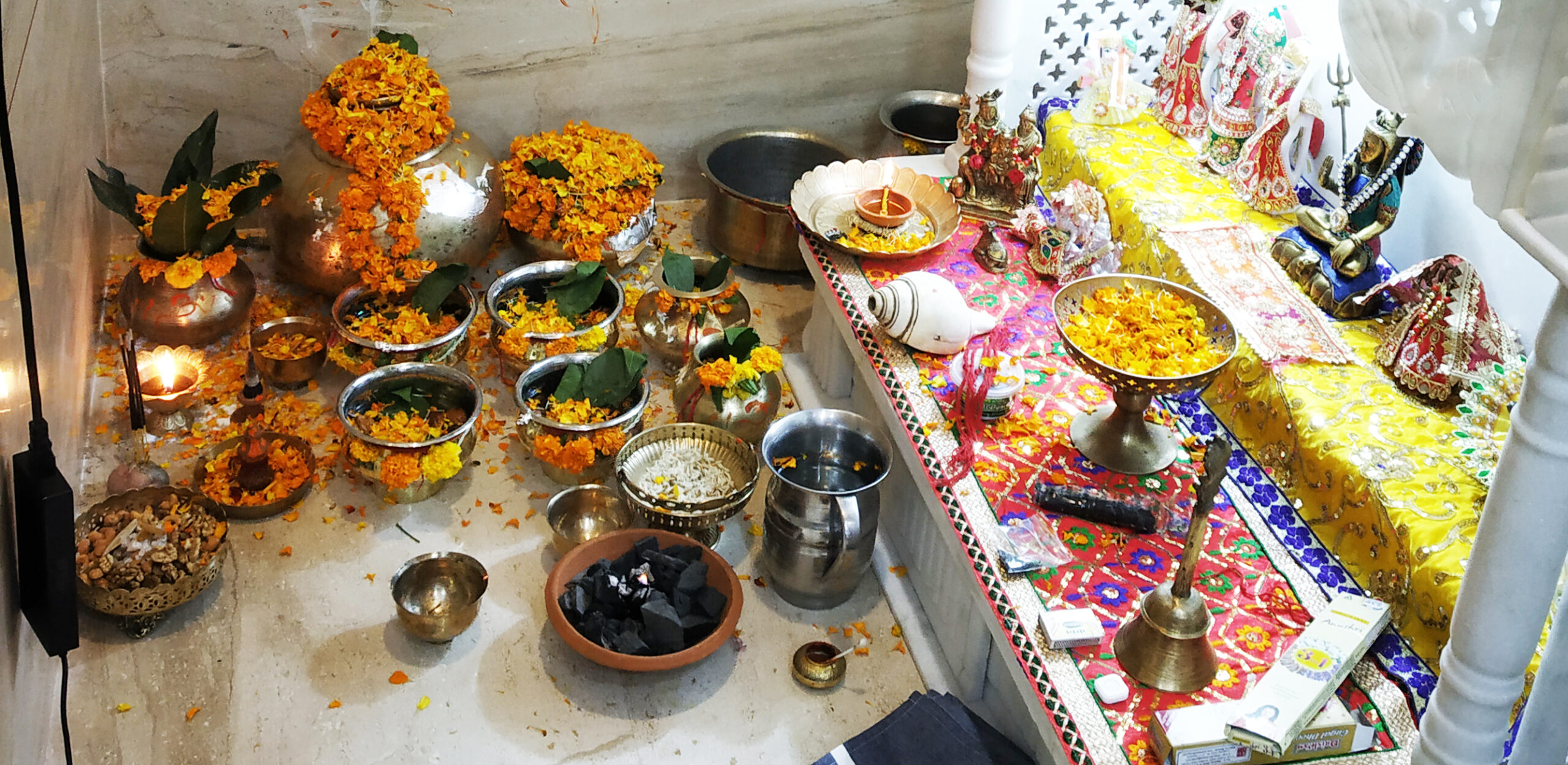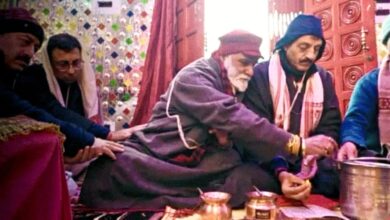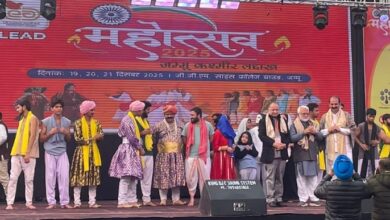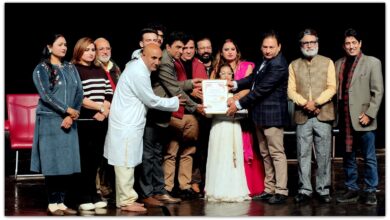Vatuk -Pooza (Mahashivratri): The most sacred religious function of the Kashmiri Pandits
 By: Rajinder Premi
By: Rajinder Premi
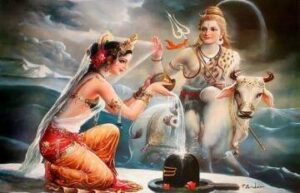 Mahashivratri is the most sacred religious function of the Kashmiri Pandits. Scrupulously, this religio-spiritual deliberation is observed by the Kashmiri Pandits, for seeing the cosmic vision of Shiva and Parvati. Since the majority of the Kashmiri Pandits are followers of Shiva, so Mahashivratri festival is observed for 15 days, beginning with the ‘Parva’ of Hurya Okdoh or Krishna Paksha Pratipda– wanning moon to the ‘Parva. of waxing moon, which is Amasya.
Mahashivratri is the most sacred religious function of the Kashmiri Pandits. Scrupulously, this religio-spiritual deliberation is observed by the Kashmiri Pandits, for seeing the cosmic vision of Shiva and Parvati. Since the majority of the Kashmiri Pandits are followers of Shiva, so Mahashivratri festival is observed for 15 days, beginning with the ‘Parva’ of Hurya Okdoh or Krishna Paksha Pratipda– wanning moon to the ‘Parva. of waxing moon, which is Amasya.
Much before the festival does actually occur, houses are cleaned, new- utensils are bought and other household things are put in order, for the glorious arrival ofthe Vatak -Raaza..One new dress for the main Puja is set aside, and thorough preprations are made and collection of eatables and edibles , fruits and sweets are made. Each day has a special name and religious function to be observed, which includes the social get-up,and interaction with friends, neigbours and relatives.
Our Shivratri Puja is known as the Vatuk -Pooza
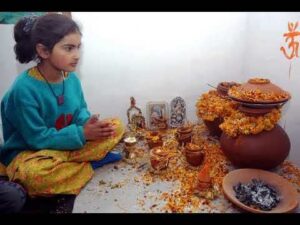 Regular cleanliness starts from Huri -Okhdoh and continues up to Ashtmi, also revered as the Horashtami. Hurya Navmi is also a prelude to te function. Dashmi is called ‘Diyaar- Dhahem’ . On this day usually married daughters come to their parental houses to participate in this social ‘At Home; for enjoying the special feast. But essentially, they are given fresh- clothes, a salt-packet, Kangri, Khagaon. and zang/aath-gath which starts from minimum one rupee coin. It is also known as the Noon Tsocha Tu Atagatha.
Regular cleanliness starts from Huri -Okhdoh and continues up to Ashtmi, also revered as the Horashtami. Hurya Navmi is also a prelude to te function. Dashmi is called ‘Diyaar- Dhahem’ . On this day usually married daughters come to their parental houses to participate in this social ‘At Home; for enjoying the special feast. But essentially, they are given fresh- clothes, a salt-packet, Kangri, Khagaon. and zang/aath-gath which starts from minimum one rupee coin. It is also known as the Noon Tsocha Tu Atagatha.
Our Shivratri puja is known and revered as the Vatuk Pooza. On the eleventh- day, known as the Daad Kah, mostly, the Pandit families cook the fish. The puja- room called Vatuk-Kuth is fully decorated with photos, pictures of Shiva Parivar, properly garlanded and nicely decorated We call this day Waguri-Baah and some families offer puja to the Vatuk. On 12th day is the day of Ganesh -puja, in association with the Wagura is invoked according to the family traditon. On this day a pot-filled with Gangajal is also worshipped and that is revered as the Wagura. The Trayodashi or 13th day is the actual day of Mahashivratri. This 13th Tithi or day of festival is known by the name of Herath, by the Kashmiri Pandit community which is celebrated with indescribable zest and joy. We Kashmiris generally believe that the marriage of Shiva and Parvati is being celebrated on this day of Herath / Mahashivratri.
How this celebration takes place?
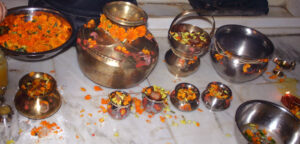 Vatak Raza is decorated in the Vatuk-Kuth. Mostly these are earthen pots / pitchers filled with nuts, soaked in water and flowers representing Shiva and Shakti. Then a definite number of small earthen pots containing walnuts in water symbolises other dieties/Baraatis. This is as per the family tradition These pitchers and pots collectively are called the Vatuk. Vatuk Raaza is the presiding -Deity. There is a set form of Puja / worship in each or in a group of our homes. Mostly, the heads of the family observe fast on Shivratri. After the worship/ Puja as well as fast, Prasada is taken at midnight. The Pooja is done according to the Tantrik way. It takes 3-4 hours to perform the whole Puja in a celebrated manner.
Vatak Raza is decorated in the Vatuk-Kuth. Mostly these are earthen pots / pitchers filled with nuts, soaked in water and flowers representing Shiva and Shakti. Then a definite number of small earthen pots containing walnuts in water symbolises other dieties/Baraatis. This is as per the family tradition These pitchers and pots collectively are called the Vatuk. Vatuk Raaza is the presiding -Deity. There is a set form of Puja / worship in each or in a group of our homes. Mostly, the heads of the family observe fast on Shivratri. After the worship/ Puja as well as fast, Prasada is taken at midnight. The Pooja is done according to the Tantrik way. It takes 3-4 hours to perform the whole Puja in a celebrated manner.
On the 14th day i.e. second day of Vatuk, usually called “salam'”the daughters and sons-in -law are invited by the parents. It is a day of grand-feast and festivity. Money called as “Hearch-kharach” and other presents are given to all younger ones . People greet each other with pleasantries and send Naivedya to each other.
The 15th day heralds the end of this auspicious festival. All the earthen pots are collected.
Deepak is alo given see off. Flowers and garlands and other decorations offered to the Vatak Raaja, are put off from them, which is usually immersed in the nearest lake or river.
In the evening some play fireworks also. The end comes in the form of Vatuk- Parmuzun. Prasada in the form of Watak Doon and Tomul Tsot or Roti is distributed among all the neighbours and relations.Thus comes this grand religious function to an end of the Kashmiri Pandit version of Heart/ Mahashivratri.
About Lord – Shiva
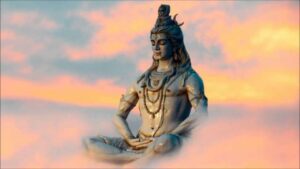 The word meaning of Shiva is All Bliss. He is one of the Hindu Trinity, comprising Brarmha, the creator, Vishnu,the- preserver and Mahesha or Shiva the destroyer. He Kaala Purusha and Kala Niyanta, the controller of Time. Time is invisible and formless.
The word meaning of Shiva is All Bliss. He is one of the Hindu Trinity, comprising Brarmha, the creator, Vishnu,the- preserver and Mahesha or Shiva the destroyer. He Kaala Purusha and Kala Niyanta, the controller of Time. Time is invisible and formless.
Therefore, Mahakala -Shiva as per the Vedas, has manifested himself self as “LINGUM” to make mankind aware of the presence of external time. That day when Shiva manifested himself in the form of Lingam is Chaturdashi. what’s the form of Lingam was the fourteenth day of the dark -night in the month of Maagh,( February – March) This is confirmed by Reshi- Markandeya.
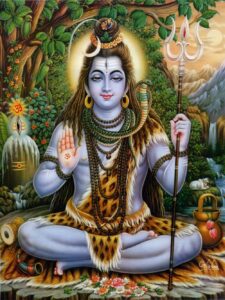 That night when the money- splendored shiva- lingam, dazzled the world with its appearance was the night of Mahashivratri, the Night of the great Shiva ”
That night when the money- splendored shiva- lingam, dazzled the world with its appearance was the night of Mahashivratri, the Night of the great Shiva ”
This Mahashivratri festival continues to be celebrated for ever and ever. Mahashivratri to mankind is the showering of peace, progress. He who observes a fast on this day and pray to all the powerful Shiva, so that all his kindness be showed upon the devoee, gets the grace of Shiva Ji Maharaj
Thatha- Asthuo.


